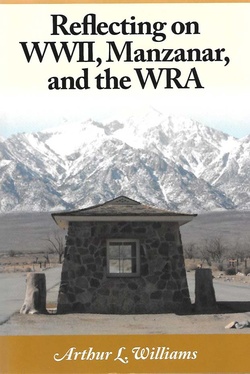Manzanar occupies a special place in my consciousness and conscience. I was first introduced to this eastern California site in 1972 by a California State University, Fullerton, History Department colleague and close friend who was a teenage Nisei inmate there during its successive World War II iterations as a Nikkei detention center run by the Wartime Civil Control Administration and the War Relocation Authority.
Among my earliest oral history interviews were those done with Manzanar detainees, camp administrators and appointed staff. My first published article pertinent to the Japanese American wartime experience was on the so-called Manzanar Riot of December 1942, and I later co-authored a book on the central figure in that bloody episode of inmate resistance to oppression. For many years I have participated in the annual Manzanar Pilgrimage. Moreover, accompanied by former Nisei Manzanarians, I frequently led my CSUF classes on forays to Manzanar, and these sometimes stimulated the involved students to generate Manzanar-based oral history interviews, term papers, master’s theses and public history projects, and even published articles and books. On several occasions, moreover, graduate students of mine collaborated with me in carrying out National Park Service-funded grant work as historical consultants relative to Manzanar’s past and ongoing development as an NPS site.
I was understandably intrigued, then, when upon browsing the books for sale in the Los Angeles-based Japanese American National Museum’s gift shop some months back, I ran across the volume being reviewed here, Arthur L. Williams’ Reflecting on WWII, Manzanar, and the WRA. Consisting of an introduction, fifteen chapters, and seven appendices, this energetic and enlightening book amalgamates a personal/family/community memoir with local/regional/national history while also doing service as a reference book on the physical and social character of the Manzanar War Relocation Center in eastern California’s Owens Valley. However, readers should be well aware that the emphasis of Williams’ “reflections” is decidedly upon the non-Nikkei experience of those who made Manzanar their “home base” during World War II. This emphasis is understandable in that the author, a teenager during his Manzanar tenure, was the son of two (of the 200 some) War Relocation Authority employees: his mother, Mary M. Williams, chief dietician; and his father, Arthur L. Williams, Sr., assistant chief of internal security.
What became clear to me as I read Williams’ book was that I was less impressed by the quality of the author’s narrative style or the analytical penetration of his historical interpretation than the sheer diligence and dedication of his monumental research into diverse aspects of Manzanar history previously slighted or altogether ignored by other Manzanar historians, including myself. One needs only to list the titles of his appendices to recognize this manifest fact: “Camp Structures,” “WCCA Manzanar Personnel,” “WRA Employees: Families, Job Titles, Housing Assignments,” “WRA Salaries,” “Original (Manzanar) Riot Report of Arthur L. Williams, Sr.” “Military (Police) Personnel at Manzanar,” and “Military Police Dates and Events of Interest.” Readers of Williams’ book will also learn much from the carefully selected photos and other illustrations that not only adorn, but also illuminate his text. You may take issue with Williams on some of his contentions, but I think you will agree that his book nicely represents what people have in mind when they call a particular book, film, museum exhibit, or other cultural production “a labor of love.”
In reading over the promotional literature for Reflecting on WWII, Manzanar, and the WRA, I found myself in accord with something attributed to the individual who is arguably Manzanar’s finest historian and without question that camp’s most skilled oral historian, former Manzanar ranger Richard Potashin. “Art Williams,” opines Potashin, “has presented the reader with a view of WWII Manzanar history from a completely new perspective. … He has pulled from personal experience and exhaustive research to reveal in-depth the WRA’s challenges in providing for the needs of 10,000 Japanese American unjustly incarcerated during World War II.”
REFLECTING ON WWII, MANZANAR, AND THE WRA
By Arthur L. Williams
(Victoria, B.C.: FriesenPress, 2014, 256 pp., $17.99, paperback)
*This article was originally published by Nichi Bei Weekly on July 21, 2016.
© 2016 Arthur A. Hansen / Nichi Bei Weekly








